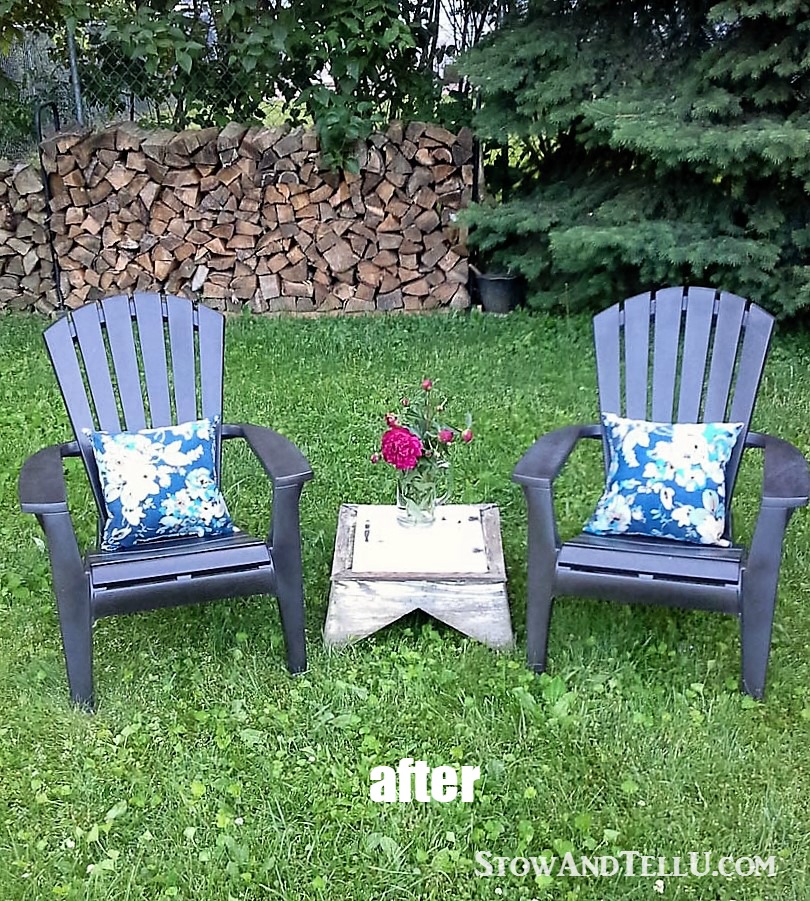Painting Old Plastic Patio Furniture: A Step-by-Step Guide
Revamping old plastic patio furniture with a fresh coat of paint can give it a new lease on life, transforming it from drab and dated to vibrant and stylish. Here's a comprehensive guide to help you achieve stunning results:
1. Preparation:
Begin by thoroughly cleaning the furniture with a degreasing cleaner. This will remove dirt, grime, and any remaining residue that might compromise adhesion. Allow it to dry completely before proceeding.
2. Sanding:
Use fine-grit sandpaper (around 120-grit) to gently sand the surfaces, creating a slightly roughened texture that will enhance paint adherence. Focus on removing any glossy finish and scuffing up the surface.
3. Primer:
Priming is crucial for plastic as it helps the paint stick and prevents peeling or chipping. Choose a spray primer designed for plastic surfaces. Apply an even coat to all surfaces, paying attention to corners and crevices. Allow it to dry completely.
4. Paint Selection:
Opt for a paint specifically formulated for plastic, as regular paint may not adhere well. Consider using spray paint for ease of application or brush-on paint for more precision and control. Choose a color that complements your outdoor decor and style.
5. Painting Techniques:
1. Spray Painting: Shake the can vigorously and hold it about 12-18 inches from the surface. Apply thin, even coats, allowing each layer to dry thoroughly before applying the next. 2. Brush-On Painting: Use a soft brush with synthetic bristles. Apply thin strokes, brushing in the direction of the grain. Allow each coat to dry before applying the next.
6. Drying:
Allow the paint to dry completely in a well-ventilated area. Avoid exposing it to direct sunlight or extreme heat, as this can cause the paint to crack or blister. Drying time may vary depending on the paint type and weather conditions.
7. Topcoat:
Once the paint is fully dry, consider applying a protective topcoat. This will add additional durability and protection against fading, scratches, and moisture. Choose a topcoat specifically designed for the type of paint used.
8. Finishing Touches:
Allow the topcoat to dry completely. Finally, add any decorative touches, such as cushions or throw pillows, to complete the refreshed look of your patio furniture.
Tips for Success:
- Test the paint on an inconspicuous area before applying it to the entire piece.
- Use multiple thin coats instead of one thick coat for better adhesion and coverage.
- Allow each coat to dry completely before applying the next.
- Clean your brushes or spray equipment thoroughly after each use.
- Store the furniture in a dry, shaded area to prolong its lifespan.
With careful preparation and the right techniques, you can successfully paint old plastic patio furniture and create a fresh, updated look that will enhance your outdoor living space.

How To Paint Plastic Patio Chairs Tastefully Eclectic

How To Paint A Plastic Chair Andrea S Notebook

How To Paint Plastic Furniture A Makeover Liz Marie Blog

How To Paint Plastic Furniture A Makeover Chaise De Jardin Technique Peinture Mobilier Salon

Yardworkation 1 Spray Paint And Plastic Lawn Chairs

Spray Painting Plastic Outdoor Furniture Suburbia Unwrapped

How To Spray Paint Plastic Chairs The Vanderveen House

How To Spray Paint Plastic Chairs Marty S Musings

Pin By Hey Rach On I Could So Make This Furniture Makeover Diy Plastic Chair Painting
How To Paint Plastic Garden Furniture Quora
Related Posts







